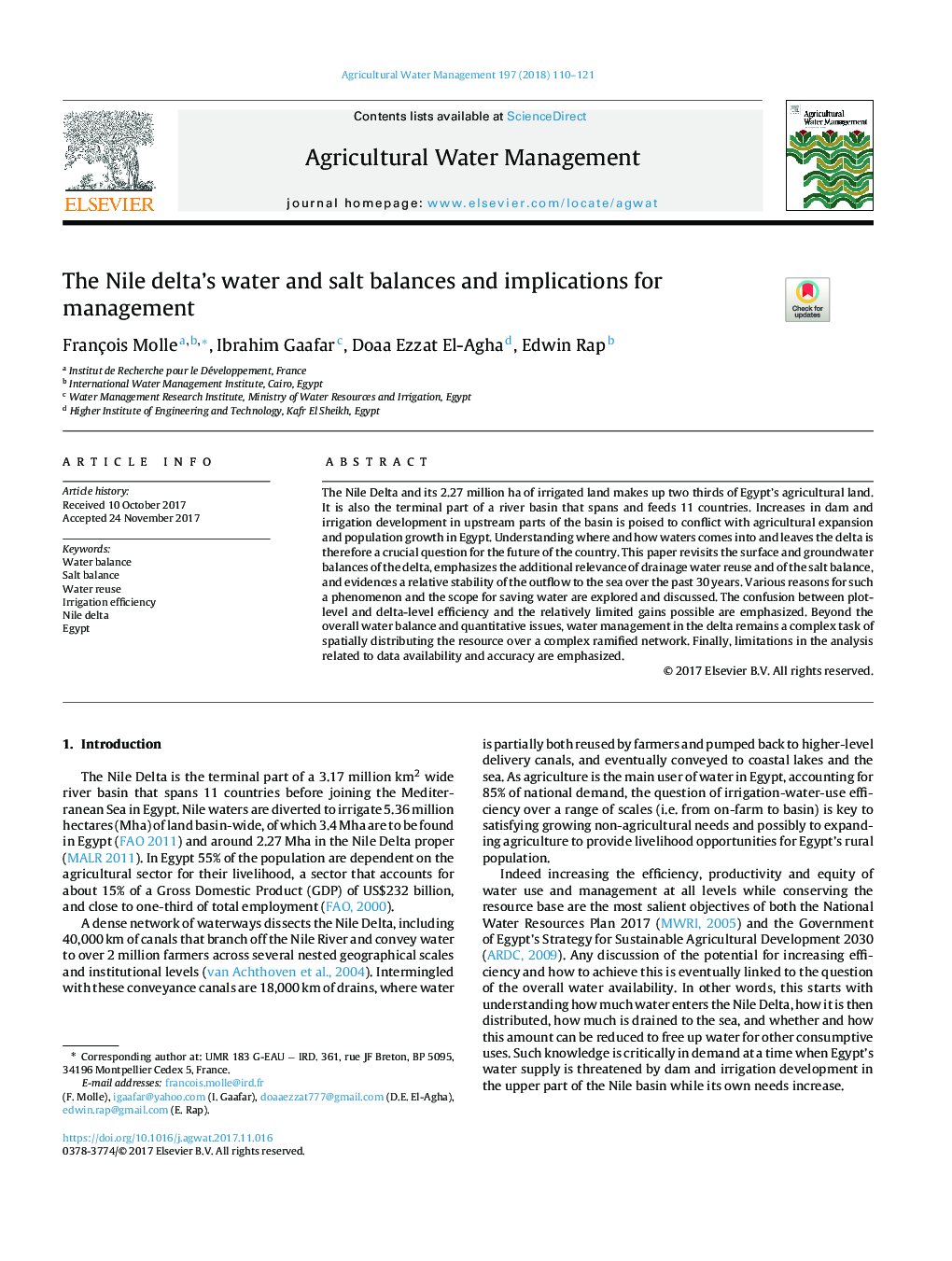| Article ID | Journal | Published Year | Pages | File Type |
|---|---|---|---|---|
| 8873168 | Agricultural Water Management | 2018 | 12 Pages |
Abstract
The Nile Delta and its 2.27 million ha of irrigated land makes up two thirds of Egypt's agricultural land. It is also the terminal part of a river basin that spans and feeds 11 countries. Increases in dam and irrigation development in upstream parts of the basin is poised to conflict with agricultural expansion and population growth in Egypt. Understanding where and how waters comes into and leaves the delta is therefore a crucial question for the future of the country. This paper revisits the surface and groundwater balances of the delta, emphasizes the additional relevance of drainage water reuse and of the salt balance, and evidences a relative stability of the outflow to the sea over the past 30 years. Various reasons for such a phenomenon and the scope for saving water are explored and discussed. The confusion between plot-level and delta-level efficiency and the relatively limited gains possible are emphasized. Beyond the overall water balance and quantitative issues, water management in the delta remains a complex task of spatially distributing the resource over a complex ramified network. Finally, limitations in the analysis related to data availability and accuracy are emphasized.
Related Topics
Life Sciences
Agricultural and Biological Sciences
Agronomy and Crop Science
Authors
François Molle, Ibrahim Gaafar, Doaa Ezzat El-Agha, Edwin Rap,
